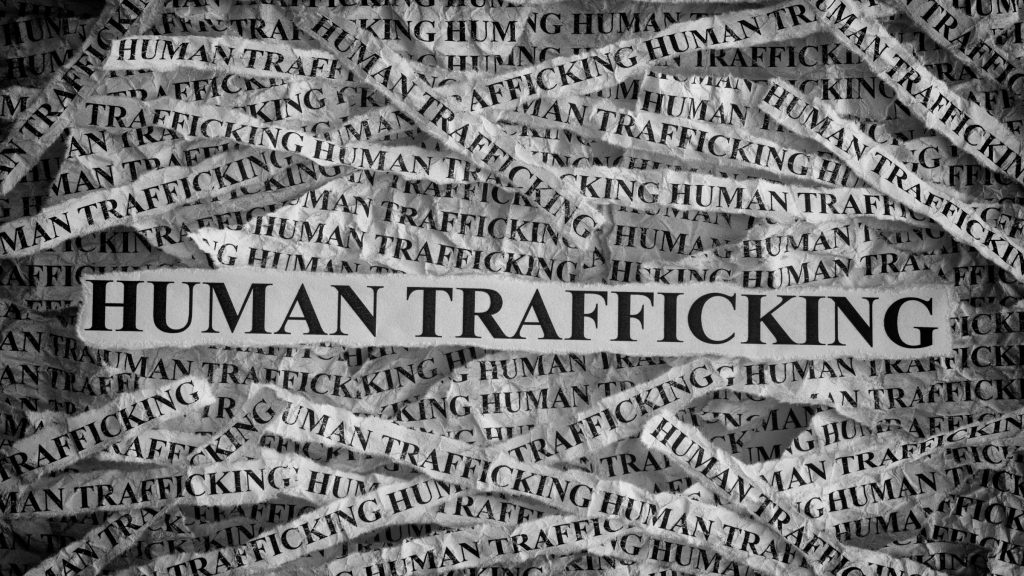There are moments in history when silence becomes complicity. Right now, that moment is upon us.
Across the United States and around the world, human trafficking has metastasized into one of the largest, most profitable criminal enterprises in existence. It is not a distant horror confined to dark corners of the world — it’s operating in our cities, suburbs, and neighborhoods. We are surrounded by the signs, yet too often, we look away.
A recent nationwide law-enforcement operation revealed the staggering reach of Chinese-organized crime networks behind sex and labor trafficking in America. According to Fox News, federal and local authorities arrested hundreds of suspects tied to a sprawling criminal syndicate that had been exploiting victims through illicit massage parlors, residential brothels, and fake employment rings from California to New York (Fox News, 2024). The victims, many of them women lured by promises of legitimate work, were stripped not only of their passports but also their dignity, agency, and hope.
These aren’t isolated crimes — they’re part of a system. The U.S. Department of Justice estimates that tens of thousands of trafficking cases are identified each year, but many more go unreported. The National Institute of Justice has documented how traffickers exploit vulnerabilities ranging from poverty to immigration status, leveraging technology to target victims and mask their activities (NIJ, 2016). What once required a network of physical coercion can now be managed through a smartphone.
The United Nations calls human trafficking “one of the fastest-growing criminal industries in the world,” generating an estimated $150 billion annually in illegal profits (UN, 2023). Criminal organizations, from cartels to cyber-enabled groups, treat human lives as commodities in a marketplace of exploitation. They move people across borders, but also within them, adapting to every loophole in law and complacency in enforcement.
As the UN’s anti-trafficking office warns, organized crime and human trafficking are inseparable: one feeds the other. The same routes once used for drug or weapons smuggling now carry women, men, and children whose worth is calculated in daily quotas rather than dignity. The “product” is human, and the business model depends on silence.
Yet for all our awareness campaigns, hashtags, and brief bursts of outrage, we remain astonishingly blind. The victims often don’t fit the stereotypes — they are domestic workers, nail-salon employees, construction laborers, farmhands, even high-school students trapped by manipulation, debt, or dependency. And because so many of them “don’t look trafficked,” they pass us every day unseen.
To its credit, the United States has taken meaningful steps. The Texas Attorney General’s Human Trafficking Initiative has built one of the nation’s most aggressive state-level task forces, rescuing victims and prosecuting offenders through intelligence-driven operations and survivor-centered approaches (Texas OAG, 2025). Meanwhile, Congress continues to refine and reauthorize the Trafficking Victims Protection Act, with updated research and data provided by the Congressional Research Service underscoring the need for interagency coordination and improved victim services (CRS, 2024).
And yet, despite these efforts, the traffickers are still winning. They adapt faster than our laws, exploit gaps in technology regulation, and thrive on global demand — for cheap labor, for illicit sex, for the illusion that exploitation can stay out of sight.
Why? Because demand is the dark fuel of the industry. For every trafficker, there is a buyer — a consumer of forced labor, a visitor to an illegal website, a client pretending not to see. Trafficking isn’t sustained by foreign cartels alone; it’s sustained by local apathy and everyday denial.
The NIJ report is blunt: most Americans still don’t know how to recognize trafficking when they see it. We think of chains and locked doors, but the reality is manipulation, coercion, and fear. Victims are often bound not by bars but by threats — threats to their families, their immigration status, or their physical safety.
Technology has made the traffickers’ job easier. Online platforms enable recruitment, control, and exploitation at scale. Cryptocurrency and encrypted messaging allow for anonymous payments and coordination. The result: a crime that has gone digital, decentralized, and disturbingly efficient.
Meanwhile, overstretched law enforcement agencies struggle to keep up. Cases are complex, cross-jurisdictional, and emotionally draining. Without sustained public pressure and political will, trafficking remains what it has always been — a “hidden crime” hiding in plain sight.
It’s tempting to think the solution belongs to governments, police, or NGOs. It doesn’t. It belongs to all of us.
Every person has the power to disrupt this system by learning the signs, reporting concerns, and supporting survivors. The Department of Homeland Security’s Blue Campaign, for instance, trains everyday citizens to recognize indicators — a person unable to speak freely, fearful of authority, or showing signs of physical abuse while under someone else’s control. Reporting even one suspicious situation can save a life.
Equally vital is supporting the organizations that meet survivors where they are — shelters, legal-aid groups, counseling centers, and nonprofits working on prevention and rehabilitation. They need not just sympathy, but sustained funding and volunteers.
Faith communities, schools, and workplaces all have a role to play. Educating teenagers about online grooming, empowering local businesses to recognize forced labor, and pushing for supply-chain transparency are practical, immediate steps. When people know what to look for, they start to see.
The moral test of any society is how it treats the most vulnerable. Right now, millions of people — many of them children — are enslaved in homes, fields, and brothels, often within miles of where we live.
If we believe in freedom as more than a word on a monument, then we must confront the uncomfortable truth that slavery still exists — not as history, but as commerce. It thrives because of our blindness, and it will only end when we refuse to look away.
Governments can prosecute, but communities must awaken. Law enforcement can rescue, but citizens must report. Survivors can heal, but only if we build a society that refuses to tolerate exploitation.
The traffickers count on our indifference. It’s time to disappoint them.

